Poverty policy and regulation
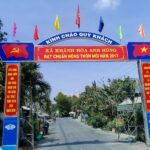
The National Targeted Program on New Rural Development – 10 years review and way forwardIntroductionIn Vietnam, rural development is nearly synonymous with agricultural sector development. Agriculture itself is crucial in Vietnamese policy, as it forms the backbone of the country’s economy. Thus, rural development has ...
(Tiếng Việt) Một vài nét tổng quan về ngành công nghiệp khai khoáng của Việt Nam
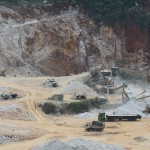
Sorry, this entry is only available in Vietnamese. ...
Urbanization in Vietnam

Vietnam’s economic transformation over the last three decades has been a remarkable success story. The country has gone from one of the poorest in the world to a thriving lower middle-income economy, thanks to comprehensive economic reforms and rapid structural transformation from an agriculture-based economy ...
State Public Land
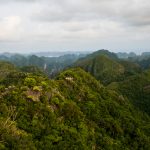
State Forest LandDuring revolution and national unification, the Vietnamese government nationalized agricultural and forest land throughout the country. While agricultural land was de-collectivized in the Đổi mới reforms since the mid-1980s, the majority of forest and forest land has continued to be managed by state ...
Land classifications

Land ConsolidationLand in Vietnam is divided into extremely small parcels by world standards. The average agricultural landholding is 1,560 square meters per capita, which is less than one-third of standard holdings in Thailand or Cambodia. Up to 70% of rural households have land use rights ...
Ethnic minorities and indigenous people

IntroductionVietnam is considered a multi-ethnic country, made up of 54 ethnic groups. The Kinh ethnic group makes up 85.4% of Vietnam’s population, or 78.32 million people. The remaining 53 ethnic groups make up only 14.6% of the country’s population (see Table 1).171Although Vietnam voted in ...
Economy and commerce
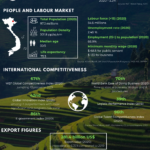
1. BackgroundVietnam declared independence in 1975 after more than 1000 years of colonization, war and conflict. At this point, Vietnam was one of the world’s poorest countries. However, in a period of 15 years, Vietnam transformed from an agricultural-based society into a transitioning lower-middle income ...
Communal Land

Customary and Communal Land PracticesCustomary practices of land use are established patterns of behavior that are locally recognized in rules and customs, either oral or written 294. Unlike national laws and policies, customary practices (sometimes called “customary law”) are developed and adapted over time by ...
Aid and development

International aid plays a significant but decreasing role in Vietnam’s national expenditure. For example in 2013, official development assistance (ODA) as a percentage of the national budget had decreased to 11.2% from 25.4% in 2003.332 The nature of development assistance has changed a lot over ...
Ethnic minorities and indigenous people policy and rights

IntroductionThe Vietnamese Government recognizes 53 ethnic minorities394 Other counts suggest the existence of more than 90 groups, amounting to approximately 10 million people, or nearly 10% of Vietnam’s population.395 Most ethnic minorities inhabit remote areas of Vietnam and have their own belief systems which are ...
Forests and Forestry
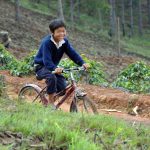
The Government of Vietnam considers forests an important ecological resource, valuable for the socio-economic development and well-being of communities throughout the country. Forests play a major role in adapting to climate change as well as in regular environmental functions such as preventing erosion and maintaining ...
Overview of Religions in Vietnam
Vietnam is a multi-ethnic, multi-cultural and multi-religious country. Vietnam was among 12 countries in the world and six countries in the Asia Pacific region, recognized as having a very high degree of religious diversity under global religious diversity surveys by the Pew Forum Institute (USA).550 ...
Rivers and lakes
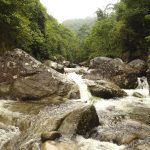
Vietnam surface water system includes all of the water in rivers, streams, lakes, ponds, and wetlands, as well as the ocean, in which river water resources are the most important that are widely used in livelihood and production. River near Sa Pa, Vietnam, a frontier town and ...
Green growth in Vietnam
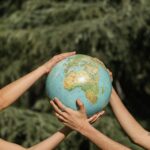
The global pursuit of Green Growth has transformed into an essential agenda in a world grappling with escalating environmental degradation, climate change, and the depletion of finite resources. This concept strives to balance prosperity and ecological sustainability by decoupling economic growth from resource consumption and ...
Religions of Ethnic minorities in Vietnam
With 54 different ethnic groups coexisting, Vietnam is a multiethnic nation. Kinh people, the majority, who comprise 82 million people or 85.4% of the country’s population, and the remaining 53 groups of – ethnic minority (EM) people make up the remaining 14.12 million, or 14.6%.630 ...
Sustainable Development Goals
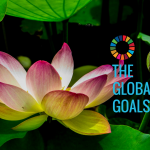
The Sustainable Development Goals (SDGs), also known as the Global Goals, are universal targets designed to end poverty, protect the planet and ensure that all people enjoy peace and prosperity in each UN member state by 2030. They are intended to continue the progress made ...
Climate Change
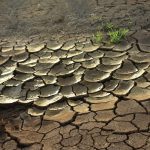
Climate Change (CC) is the change in weather, and related patterns of oceans, land, surface, and ice sheets such as temperature, ice melt, and sea level rise. While CC has historically been a natural occurrence, current CC is believed to be caused by human activities ...
Infrastructure
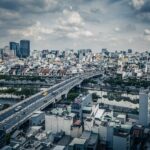
Investment in public infrastructure has been one of the key driving forces for Vietnam’s economic development over recent decades. Infrastructure accounted for 53% of total Official Development Assistance (ODA) received between 2010-2017.790Vietnam has heavily invested in transportation, particularly roads, airports, and seaports. Vietnam’s public and ...
Development and assistance for ethnic minorities and indigenous people
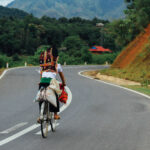
Vietnam’s civil society and ethnic minoritiesIntroductionIn Vietnam, ethnic minorities are supported by a network of non-governmental organizations, known as “civil society”. Civil society includes international non-governmental organizations (INGOs), Vietnamese mass organizations, Vietnamese umbrella organizations, Vietnamese NGOs (VNGOs), community-based organizations (CBOs), and professional organizations, although professional ...
Land
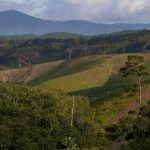
Vietnam’s 0.3 hectare of agricultural land per person is among the lowest in the world. Vietnam’s Constitution holds that land and other natural resources are "public property, owned by all the people..." Vietnamese law does not recognize customary forms of tenure, and communities (villages) do ...



